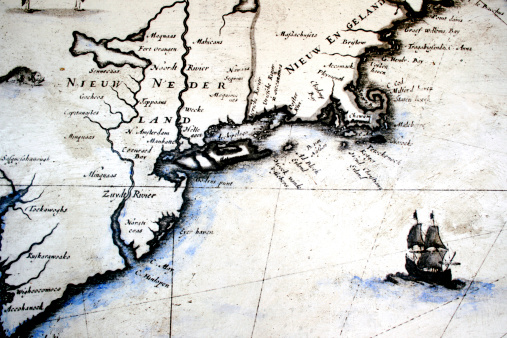Which History and Whose History is the True History?
True history certainly isn’t the cherry-picked history told by the intelligentsia at the Metropolitan Museum of Art.
The Wall Street Journal recently published a letter to the editor by Kenneth Weine, the chief communications officer of the Metropolitan Museum of Art in New York. Judging by what Mr. Weine wrote, his job title could just as well be “propaganda minister”—or, better yet, “platitude minister.”
Mr. Weine’s letter was in response to a Journal op-ed that claimed that the Met and other art museums had sacrificed art on the altar of wokeness. The op-ed gave an example of the Met placing an interpretive sign next to an exhibit, explaining that the former benefactor who had donated the collection on display had benefited from slavery and the slave-based sugar industry.
In defending the sign, the platitude minister parroted platitudes about the museum having a mission of understanding “mankind” (his word, not mine), as well as examining the “uncomfortable truths about our history.”
Not surprisingly, as is the case with so many esteemed members of America’s white overclass, Mr. Weine went on to reveal an obsession with skin color, lamenting that “half of the museum boards have only white trustees.” He did not specify which of the hundred or so unique ethnic groups in America and the world with whitish skin are represented on the boards. Thus we don’t know if Iranians or Kurds or Turks or Armenians or impoverished Scots-Irish Appalachians or other white minorities are board members.
If you believe that it is overwrought to refer to Mr. Weine et al. as an “overclass,” click on the following link to see the photos and bios of the top leadership of the Met.
Although Mr. Weine isn’t in top leadership, he fits the mold:
With their advanced degrees, mostly from the Ivy League, one would think that they would understand the folly of reducing to a sign an understanding of mankind and the uncomfortable truths about our history.
A full understanding of mankind requires a knowledge of history beyond one fact or point in time, a history that includes the uncomfortable truths about not only American history and white history but also the uncomfortable truths about all the other nationalities, races, skin shades, civilizations, and tribes.
But it is not the agenda of the Met’s woke leaders to tell balanced history. Their agenda is to negatively portray America and people they deem as white, a group that includes themselves. Why aren’t they honest about that?
Mr. Weine should know better. As a vice president of the New York Public Library for four years, he had access to stacks and stacks of history books. He could’ve learned in just several shelves that human nature is universal—that it is both good and evil, that it transcends race and geography, and that all peoples have both good and evil in their history.
That’s a very different but accurate message to convey to museum patrons than the shopworn, unoriginal, copycat woke message that the Met wants to convey.
Mr. Weine is welcome to borrow books from my personal library, which includes books that detail the good and bad of the United States and its founding Anglo-Saxon Protestants. But it also includes books that detail the good and bad of other nations, ethnocultural groups, and skin shades.
One of the books is a history of Cuba and the horrors of the sugar industry on the island: Cuba: An American History, by Ada Ferrer. It will have you rooting for Cuban revolutionaries, including Fidel Castro—or at least his early years before he turned communist.
There is a big problem with the book, though, at least from the perspective of the Met: It goes against woke dogma by also telling the truth about “Hispanics,” which is a catchall name given to anyone in the Americas whose full or partial ancestry goes back to Spain or Portugal. It is a grab-bag of a category that includes widely diverse nationalities, races, mixed races, ethnicities, skin shades, and socioeconomic classes.
According to woke mythology and diversity and inclusion initiatives, Hispanics are considered a disadvantaged minority, although Americans so categorized far outnumber scores of ethnic groups that are considered to be in the majority. For example, Americans of Mexican ancestry alone number about 36 million, or six times more than the number of Americans of Italian ancestry, an ancestry that Anglo Saxons didn’t see as white in the early twentieth century, leading them to pass the Immigration Act of 1924 to restrict the immigration of Italians and other southern Europeans.
The truth is that Hispanics were heavily engaged in the sordid sugar industry, where they brutalized not only indigenous peoples and African slaves but also mestizos, who in turn brutalized other mestizos. Moreover, Hispanics engaged in the slave trade decades before 1619 and enslaved considerably more Africans than the English and Dutch did.
Crooked and authoritarian Hispanics ran Cuba for decades, with the backing of the United States. Cuba President Gerardo Machado was one of them. In August 1933, in the face of being deposed by a public that hated him, he and a few loyal companions carried bags of gold to the airport in the middle of the night and escaped on an airplane. One of the loyalists was Desi Arnaz Sr., the former mayor of Santiago and father of Desi Arnaz Jr., who would become the male lead in the popular long-running TV series, “I Love Lucy.”
Using the Met’s standards, any reruns of the show should come with a prefatory warning about Desi’s tarnished family history.
In terms of my heritage, Frank Sinatra’s records and movies also should come with a warning. Why? Because he was connected to the Italian mob, which was connected to the crooked Batista regime. As dramatized in the “Godfather” movie, the major US mob families held a meeting in Havana, in December 1946. Not only did Sinatra perform for the mobsters, but, as rumor had it, he had carried $2 million in cash on his trip to Havana for delivery to Lucky Luciano.
For sure, the Met shouldn’t take any donations from Citibank, do business with Citibank, or have any members who work for Citibank. An excerpt from the book Cuba explains why:
A much greater percentage of sugar profits, however, were invested in US industries such as coal, iron, manufacturing, railroads, banking, and so on. Moses Taylor, a New York sugar broker, made his early fortune in what everyone called “the Cuba trade” and then invested it in banking and industry. Within a few decades, he was president of the National City Bank of New York, a precursor to Citibank. When he died in 1882, his estate was worth at least $35 million, the equivalent of perhaps $1.3 billion in 2020.
Phew! Think of the number of interpretive signs it would take to adequately cover the history of just Cuba. Given that the aforementioned book with the eponymous name is 630 pages, it would take at least that number of signs.
Come to think of it, the Met should move out of Manhattan or plaster it with interpretive signs, considering the history of the island.
An outstanding history of early Manhattan is the book, The Island in the Center of the World, by Russell Shorto. It is balanced history, which is a foreign concept to the woke bigwigs at the Met, or anywhere else for that matter.
The book tells the story of the Dutch founding of Manhattan and its surrounding area. It is based on seventeenth-century records and correspondence that had been lost until recent times and then went untranslated for many years because few scholars knew the old Dutch language.
Under Dutch rule, Manhattan was highly tolerant and multicultural, with the Dutch living mostly in harmony with other Europeans, other faiths, Native Americans, and free blacks. The Dutch were much more tolerant than the Pilgrims and Puritans and didn’t share their religious zealotry. In the context of seventeenth-century mores, they were quite progressive, in spite of engaging in the slave trade. Russell Shorto makes a compelling case in his book that America’s humanism, pluralism, democratic republicanism, and free trade stem more from the Dutch than the English.
One indication that Shorto wrote a balanced book is his coverage of relations between the Dutch and Native Americans. Shorto is not reticent in detailing the atrocities committed by the Dutch when their otherwise good relations with Native Americans went awry and resulted in bloodshed. But at the same time, he’s not reticent in detailing the atrocities committed by Native Americans, not only against the Dutch but also against competing Native-American tribes.
In other words, Shorto follows history, wherever it takes him and whomever it might offend. That’s not the path that the Met and other woke institutions take. They think in black and white, not greys; they think in terms of modern sensibilities, not in historic contexts and nuances; and they cherry-pick history to advance a political agenda.
In any event, the Met is going to be busy trying to erase the stain of Dutch history from New York City and its environs. After all, Brooklyn got its name from the Dutch Breuckelen; the Bronx is named after Jonas Bronck, a Dutch farmer; Yonkers is named after a Dutchman who was known as “the Jonker” and whose property was called “Jonker’s land”; and Long Island got its name from the Dutch Lange Eylandt.
Given all of the reminders of Dutch evil and white evil in New York, it would be easier for the Met to move to a part of the world where there is no history of evil. Sure, a move would be expensive, but the museum would not have to spend money on interpretive signs explaining uncomfortable truths, as there would be no uncomfortable truths in their newfound utopia.




